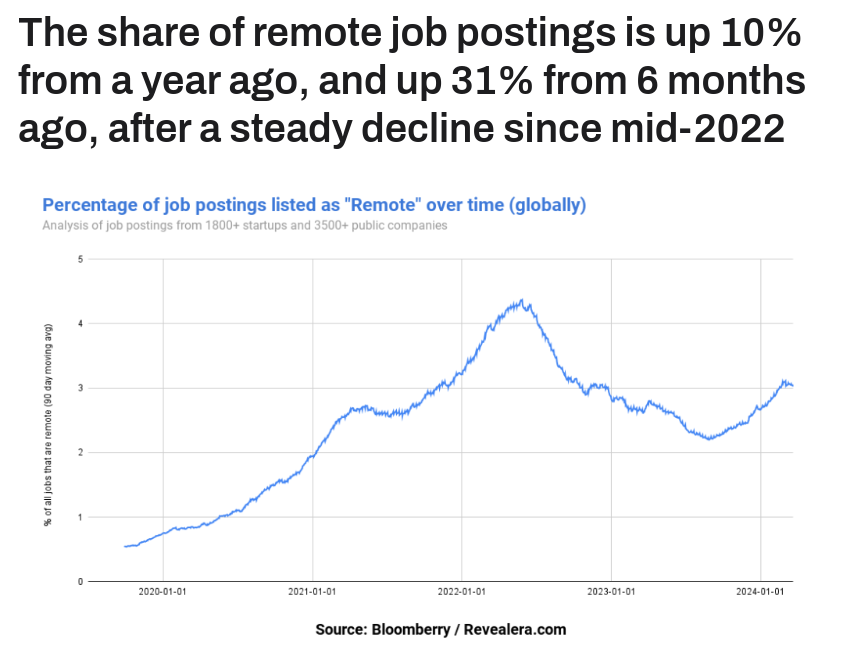As a test, this content as a podcast here
It is virtually impossible to test human-driven processes in the same way a scientist might test hypotheses, despite our use of the term social “science,” but none of that inability to truly test cause and effect relationships alleviates the need to make decisions in a void.
Consider the current debate over “return to office” policies, often touted because “in office” work builds company culture. Ignore for the moment our inability to measure “company culture.” Ignore the possible impact on productivity of office or knowledge workers (since we cannot really measure that, either.
Researchers do not agree on whether the thesis that “in office” work creates or sustains company culture, even if it might affect other elements of “culture” such as collaboration, job satisfaction, innovation or employee assessment, training and advancement.
Study Title | Date | Publisher | Key Conclusions |
The Surprising Truth About InPerson Work | 2024 | Robin Powered | Inperson work boosts collaboration, job satisfaction, and innovation. Physical proximity increases knowledge sharing and motivation. |
'Office culture' as we know it is dead. Workers have other ideas | 2024 | BBC | Employees are less interested in pre-pandemic office perks and culture. They prioritize flexibility, equitable pay, and being seen as whole humans. |
Why a full return to office is gaining ground | 2024 | HRD Connect | In-office work enhances company culture through informal interactions and facilitates mentorship. However, employee preferences for flexibility must be considered. |
Working in the office 5 days a week to build company culture is a myth | 2024 | Fortune | Hybrid workers report higher levels of satisfaction, engagement, and feelings of belonging compared to full time in-office workers. Forced return to office can negatively impact culture. |
Workforce Radar Report | 2024 | PwC | Hybrid workers demonstrate the highest levels of satisfaction and engagement. The idea that fulltime in-office work is necessary for strong culture is a myth. |
"The Impact of Physical Workspaces on Organizational Culture" | 2023 | Harvard Business Review | In-office work fosters a stronger sense of community, improves collaboration, and enhances knowledge sharing among employees. |
"The Role of InPerson Interactions in Building Company Culture" | 2022 | Stanford Graduate School of Business | Face-to-face interactions are crucial for building trust, fostering a sense of belonging, and creating a shared company identity. |
"The Negative Effects of Remote Work on Company Culture" | 2021 | MIT Sloan Management Review | Remote work can lead to decreased employee engagement, reduced informal communication, and a weaker sense of organizational connection. |
"The Benefits of Hybrid Work Arrangements for Company Culture" | 2020 | McKinsey & Company | A hybrid work model can balance the advantages of in-office work with the flexibility of remote work, promoting a positive company culture. |
"The Impact of Office Design on Employee Productivity and Wellbeing" | 2019 | Cornell University | A well-designed office environment can enhance employee satisfaction, productivity, and overall well being, contributing to a positive company culture. |
Without much doubt, most employees prefer remote work when it is available. What is less clear is whether “return to office” mandates enable firms to function at a higher level of output or quality (assuming the work is amenable to remote venues and assuming you believe you can measure such effects.
In some cases, studies suggest in-person work does improve productivity, to the extent that collaboration or knowledge sharing matters, and assuming such outcomes differ from remote instances in a material way.
In other cases, outcomes likely hinge on the actual job functions. Writers, code developers, artists, marketing or advertising functions and many sales functions traditionally have used lots of remote workers, as the work is suited to remote basing.
Study Title | Date | Publisher | Key Conclusions |
The Science behind InPerson Productivity at the Office | 2024 | Robin Powered | Physical proximity boosts collaboration and knowledge sharing. Employees within 25 feet of high-performing colleagues saw a 15% productivity improvement. |
Study finds hybrid work benefits companies and employees | 2024 | Stanford University | Hybrid work (2 days remote had no negative effect on productivity or career advancement. It reduced employee turnover by 33%. |
Americans are embracing flexible work—and they want more of it | 2024 | McKinsey & Company | Well-organized hybrid work can improve productivity by up to 5%. 83% of employees cite increased efficiency as a primary benefit of remote work. |
Study finds workers say they need to be in an office to be productive | 2024 | Scripps News | Workers report needing to be in the office for twothirds of the workweek to be productive. Top reasons include better focus and accessing technology. |
The Surprising Truth About InPerson Work | 2024 | Robin Powered | In-person collaboration improves task completion by 50% compared to solo work. Face-to-face interactions are more impactful than virtual ones. |
Perhaps the actual impact on productivity is not really the issue. If managers believe they are better off with employees in the office (for whatever reasons, that might be all that matters. Irrespective of the matter of productivity, which cannot be measured anyhow, if managers believe they benefit from “in office” work modes, that is likely to happen.
Still, some jobs traditionally have been highly amenable to remote work.
Job | Reasons for Remote Work Suitability |
Software Developer | Work primarily involves coding and digital tools Collaboration possible through version control systems Can easily share and review code remotely |
Graphic Designer | Digital design tools accessible from anywhere Can share and collaborate on designs online Client meetings can be conducted virtually |
Writer/Editor | Writing and editing can be done independently Digital collaboration tools for feedback and revisions Research can be conducted online |
Data Analyst | Data analysis software accessible remotely Can access databases and datasets from anywhere Results easily shareable through cloud platforms |
Customer Service Representative | Phone and chat support can be done from home Customer management systems accessible remotely Call routing technology allows for distributed teams |
Digital Marketer | Online marketing tools and platforms accessible anywhere Analytics and reporting can be done remotely Virtual collaboration for campaign planning |
Translator | Translation work can be done independently Digital resources and translation tools available online Can communicate with clients virtually |
Accountant | Accounting software accessible from anywhere Digital document sharing for financial records Virtual meetings for client consultations |
Project Manager | Project management tools allow for remote team coordination Virtual meetings for team updates and planning Can track progress and deadlines online |
Online Teacher/Tutor | Virtual classrooms and learning management systems Can conduct lessons via video conferencing Digital resources for curriculum and assignments |
Remote Sales | Outside sales staff often are based wherever key clients are Inside sales can be based anywhere |
According to one 2022 survey (which might still show the impact of Covid work-from-home policies, many industries were seeing high growth of remote work.
Finance and Insurance 2,062%
Legal and Accounting 1,995%
Retail 1,651%
Aerospace 1,341%
Media 1,280%
Real Estate, Construction 1,150%
Information Technology 1,132%
Education, Govt., Non-profit 1,097%
Consumer Technology 1,028%
Consumer Goods 1,651%
Hospitals,Medical Centers 1,028%
Healthcare 859%
Telecommunications 1,020%
Energy and Utilities 897%
Technical Services 878%
Enterprise Technology 701%
Manufacturing 869%
Food and Beverage 719%
Hospitality and Recreation 644%
Transportation 634%
Business Services 550%
Staffing 475%
Pharmaceuticals 248%
source: The Muse, Ladders
And though large enterprises are shifting back to “in office” work, remote work job openings might still be increasing in 2024, compared to 2023. The number of “remote” job postings peaked in 2022, as Covid pandemic restrictions prohibited much in-office work.

source: Bloomberry
All that noted, remote work is both an employee preference issue and a management comfort issue, at least for jobs that can plausibly be done on a remote basis.


No comments:
Post a Comment